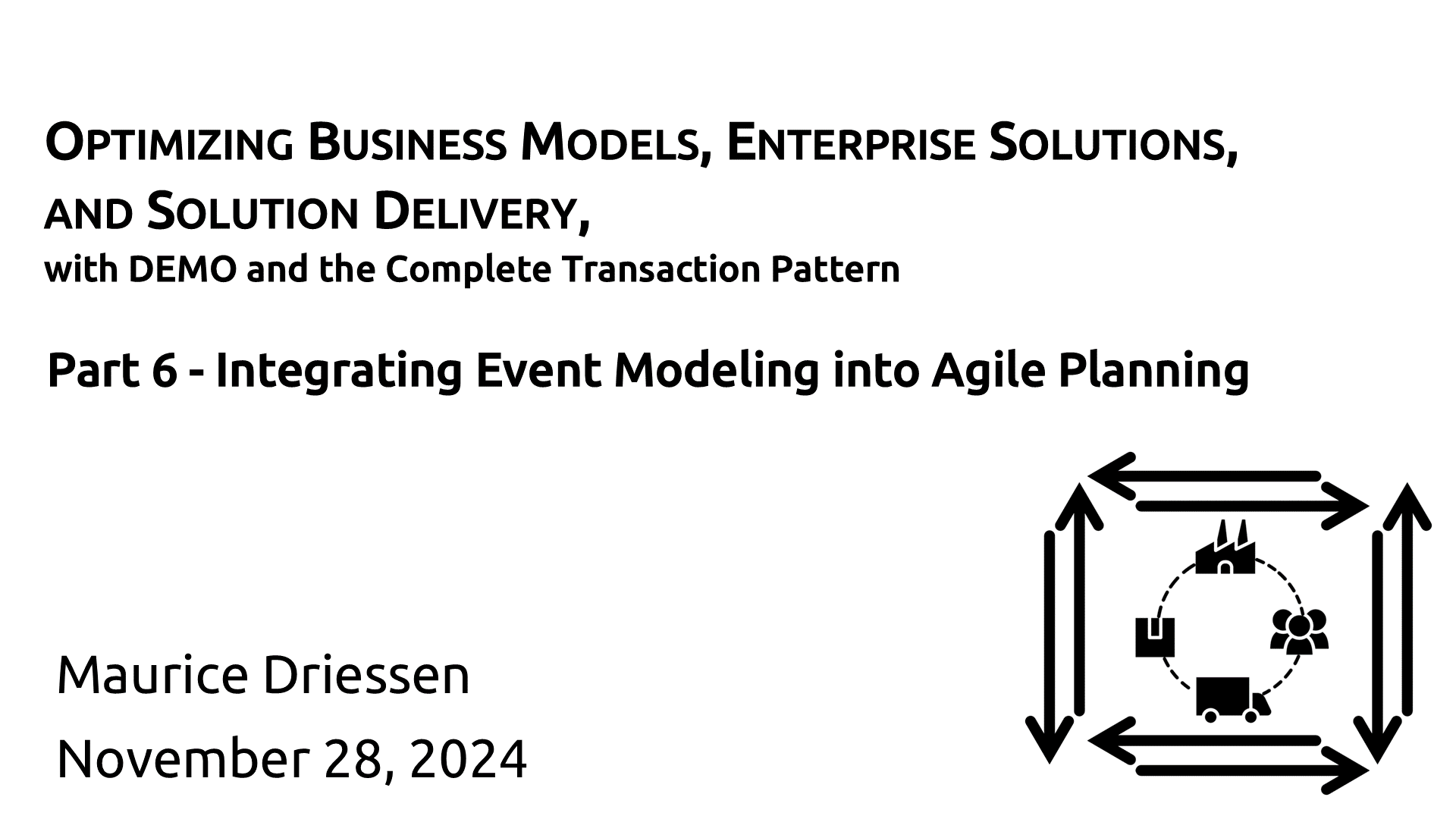The output from event modeling feeds directly into the Agile Planning cycle, ensuring that development is closely aligned with the business goals embedded in the CTP-based business model.
Agile Planning with Event Models
- Backlog Creation: The events and workflows identified in event modeling are used to create a backlog of features. Each feature corresponds to implementing a specific event or a set of related events, ensuring that development efforts are always aligned with business needs.
- Prioritization: Events and workflows are prioritized based on their business impact. Critical transactions that are essential for business operations are developed first, ensuring that the most valuable features are delivered early in the project.
- Sprint Planning: Prioritized events and workflows are broken down into user stories and tasks for sprints. Each sprint focuses on implementing and testing specific business events and workflows, ensuring continuous delivery of value. The handling of exceptions (e.g., declines, rejections, and revocations) is also incorporated into the sprint planning, ensuring that all scenarios are covered.
- Continuous Feedback and Adaptation: After each sprint, the implemented features are reviewed with stakeholders. Feedback is used to refine the event en view models, ensuring that the system evolves in line with business needs. This iterative approach allows the team to adapt to changing requirements and priorities, maintaining alignment with the overall business strategy.
- Test-Driven Development (TDD): Event-driven tests are developed to validate that each event works as expected, ensuring a robust and reliable system. By testing each business event, the development team can ensure that the enterprise solution architecture remains consistent and aligned with the business processes, even as new features are added.
Example: Agile Planning for an E-commerce Platform
Continuing with our e-commerce example:
- The development team identifies the OrderRequested, OrderPromised, and OrderDeclared events as high-priority features.
- In the first sprint, the team focuses on implementing the OrderRequested event, ensuring that the system can handle order placements and generate the appropriate event. This includes handling potential declines if the product is out of stock.
- In subsequent sprints, the team implements the OrderPromised and OrderDeclared events, continually refining the system based on feedback from stakeholders. If necessary, the team also implements revocation scenarios to handle exceptional flows in the order transaction.
This approach ensures that the development process is iterative, with each sprint delivering tangible business value while keeping the enterprise solution architecture aligned with the essential business processes.
Unlock Exclusive Insights!
If you’re eager to dive deeper into the methodologies and strategies discussed in this series, we invite you to request a copy of the comprehensive whitepaper, containing all the articles in this series. To get your copy, simply fill out our form here. Don’t miss out on the opportunity to enhance your understanding and transform your organization!

